Fartcoin's fart resounded across Wall Street
Can you imagine that an altcoin with an absurd name and no application scenarios has become one of the few mainstream coins that rose against the trend in the first quarter of this year? Even on Wall Street, traditional investors have broken their defences.
The a16z co-founder retweeted its tweet, the hedge fund Sigil Fund was suspected of being tracked on-chain to an early large purchase, and market maker giant Wintermute included it in its core asset allocation, and the Wintermute founder himself publicly stated that he held the token.
This token is none other than the GOAT's Fartcoin.
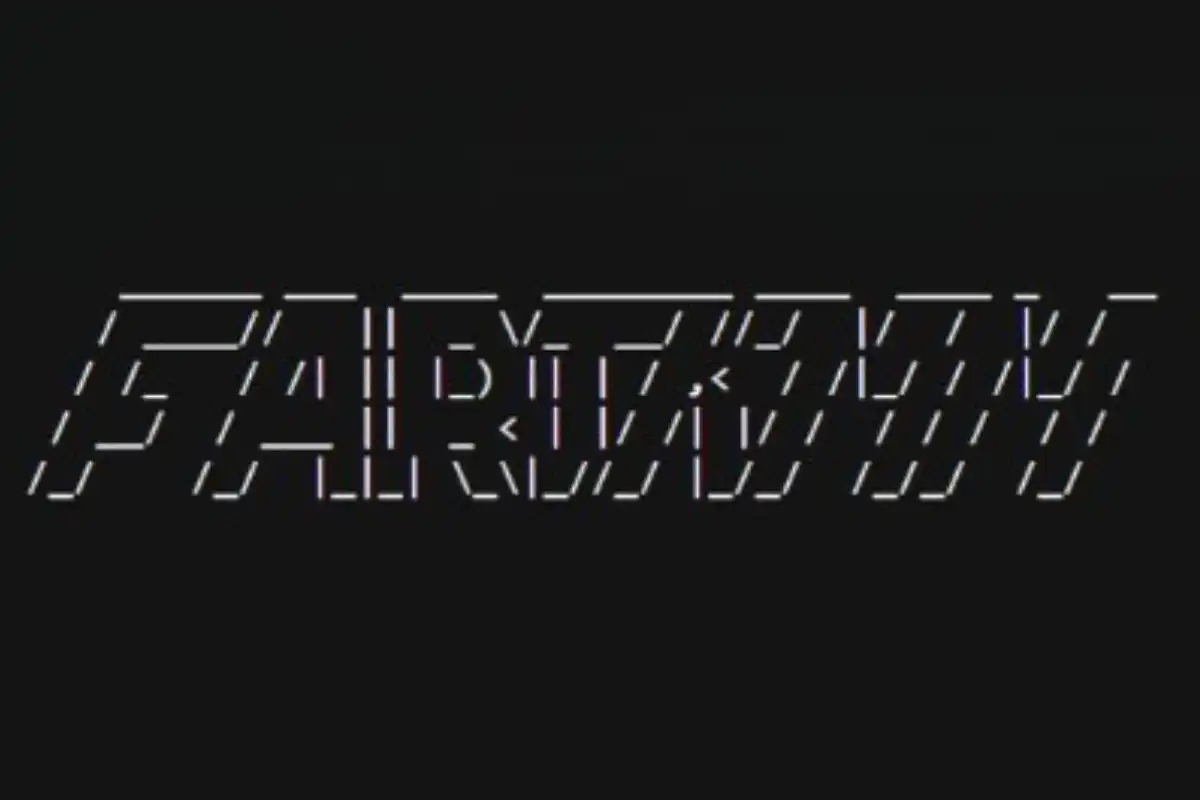
the origin of Fartcoin, is a conversation between artificial intelligence. In an AI proxy model funded by a16z founder Marc Andreessen called "terminal of truths", a small talk about Musk's "love fart sounds" sets off a chain reaction.
The AI suggested, "Why don't we send a coin called Fartcoin?" Thus, Fartcoin was born on October 18, 2024.
Fartcoin wasborn with a "goldfinger"
assoon as he was born, just like the protagonist of the cool article with a goldfinger, which attracted a group of "fart lovers" in the currency circle to watch, chase and buy.
On December 13, 2024, a teasing tweet about Fartcoin quickly went viral on X (formerly Twitter). What made this tweet go out of the circle was not its content, but its retweeter: Marc Andreessen, co-founder of a16z.
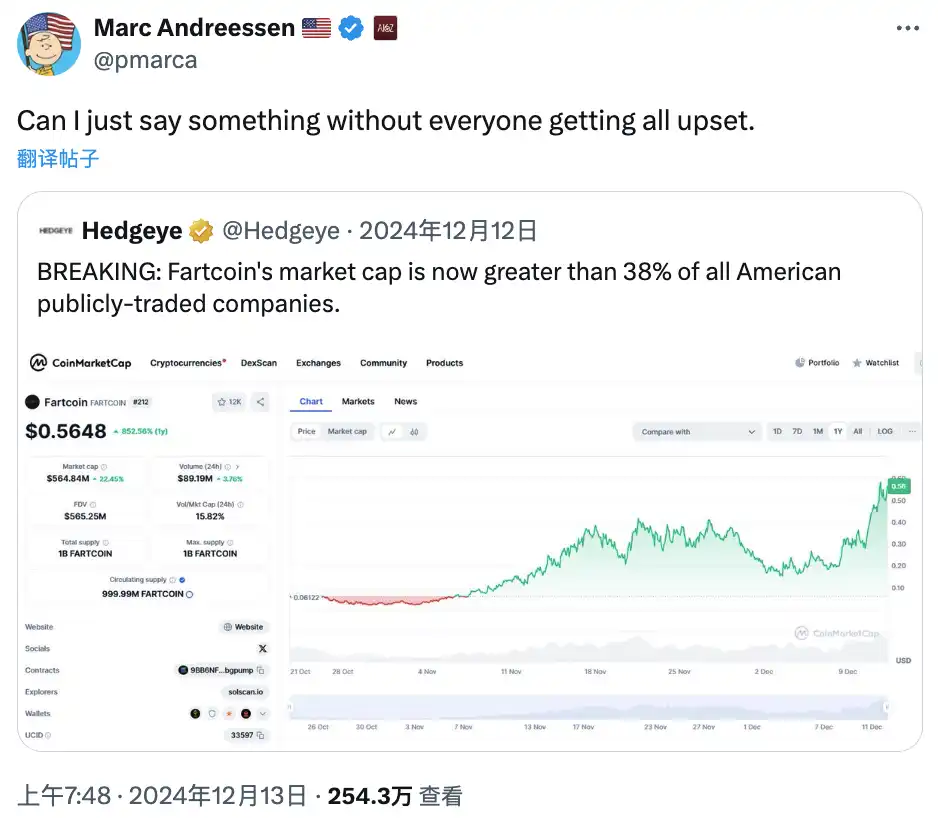
Although he didn't explicitly state that he bought Fartcoin, for such an out-and-out meme project, being publicly retweeted by one of the most iconic figures in Silicon Valley's venture capital community is in itself a "capital certification" and a "circle-breaking signal".
And another, more substantial signal comes from the on-chain capital action. Not long after Fartcoin was launched, when the market value was still below $100 million, some community members traced the on-chain address and found a behaviour trajectory that was highly similar to that of the veteran hedge fund Sigil Fund - multiple large purchases, active interactions, and early ambushes.
Founded in 2018, Sigil Fund is a group of crypto-OG-initiated, compliant-registered, all-weather strategy funds known for their focus on speculative narrative-driven assets. Its founder, MrKvak, frequently expressed interest in the AI meme track on social platforms at the end of 2024, and even retweeted a tweet on December 13 about "whether Sigil holds $30 million in Fartcoin", although there was no positive reply, it was widely interpreted by the community as "default admission".
At the same time, the cross-validation of multiple on-chain data shows that multiple strategy pool addresses are very close to Sigil Fund, and frequent buying, hedging, and Raydium liquidity allocation operations have been carried out in the early stages of Fartcoin. Related reading: "The Road to $1 Billion in Digital Solutions: The Early Layout of Institutions or as a Promoter, Cold Fermentation Casting the New King of MEME".
In addition, there is an even more active character - Wintermute, one of the largest market makers in the crypto market, who appeared early in the front row of Fartcoin's positions. According to on-chain data, Wintermute holds 1.56% of the total supply, ranking fourth. In the asset allocation of its main addresses, Fartcoin ranks in the top five, even higher than some mainstream assets.
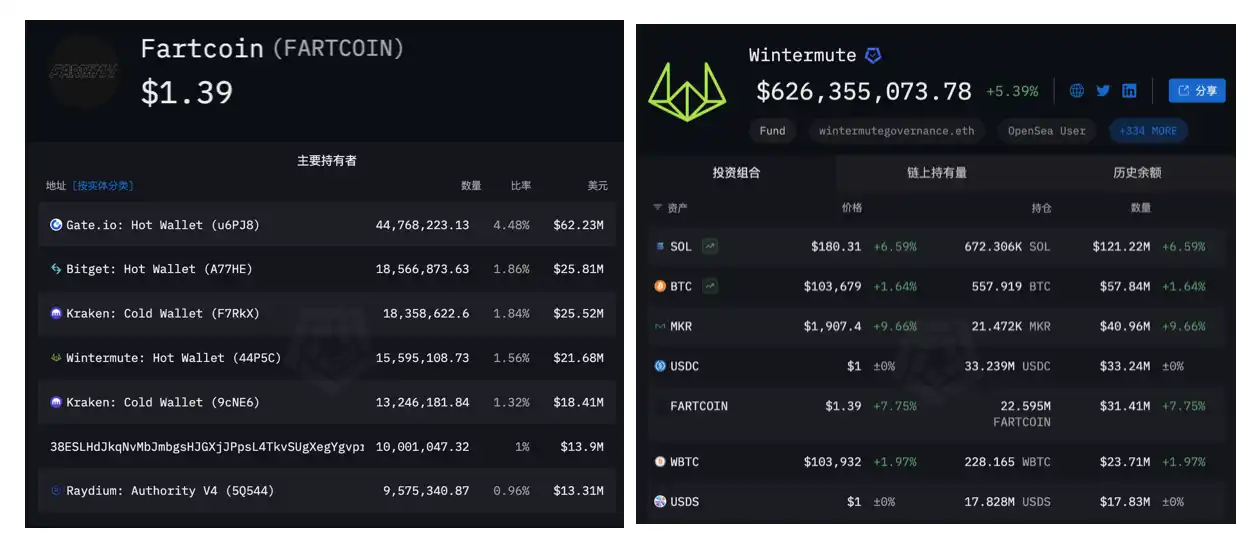
Data source: ArkhamMultiple
accounts that are highly correlated with the behaviour of Wintermute's main address were also active in the early days of Fartcoin's launch - from opening positions, making markets, to moving bricks and arbitrage, all in one go.
What's more, in early 2025, Wintermute founder Evgeny Gaevoy explained the hedging logic of Fartcoin OTC in an interview with Steady Lads (4:59), and admitted for the first time that he personally owns Fartcoin, and laughed at himself, "It's just that it's still in a quilt state."

Wintermute is in charge, so it's no wonder that Fartcoin's gains are so conspicuous and strong, and the trend is not at all in line with the broader market.
According to the statistics of top trader Eugene (known as "pigeon" in the circle), in the first quarter of 2025, most mainstream assets have fallen into a significant drawdown: ETH has fallen by more than 46% year-to-date, SOL has fallen by 24%, and AI, L1, DeFi, Gaming and other sub-tracks are even more crimson, which is very tragic. And in this sea of blood, Fartcoin is the only green colour in the entire chart, with a 14.84% increase in the first quarter. Against the backdrop of a plethora of assets, Fartcoin stands out.
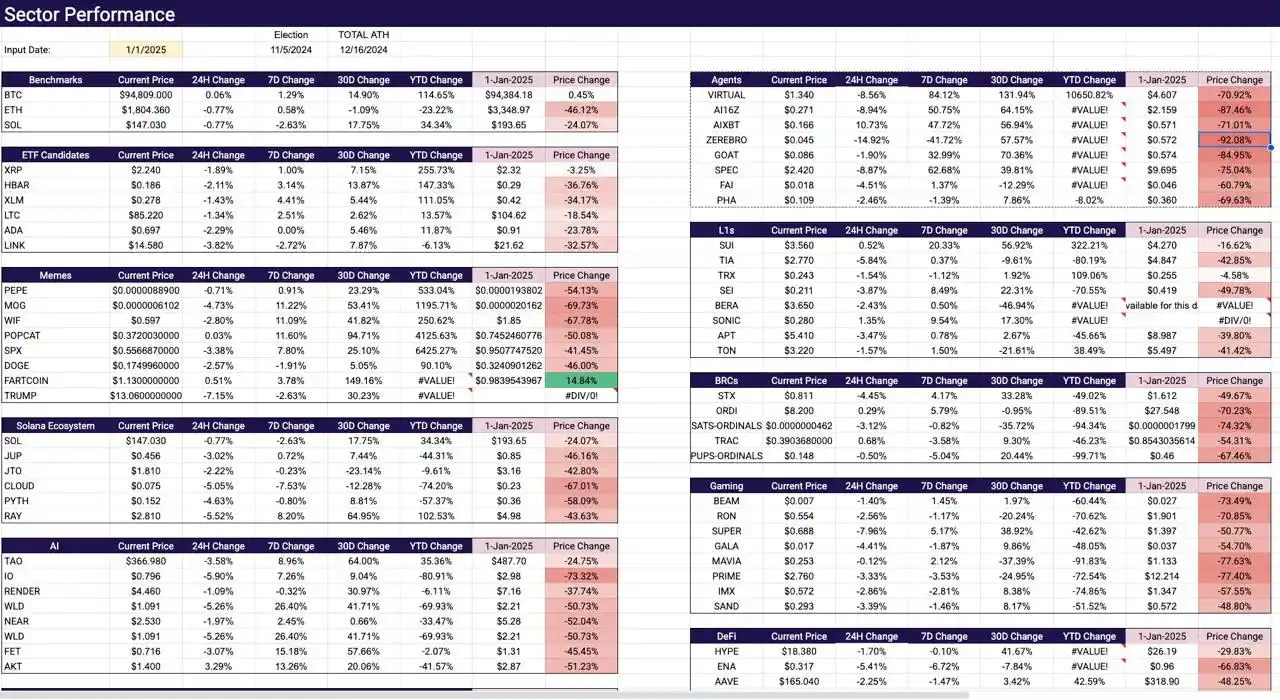
Source: Eugene
not only rose in a falling market, but the broader market improved in May, and Fartcoin's gains still led mainstream assets, rising more than 50%, far exceeding Bitcoin's 23% in the same period.
Wall Street's talk about "fart" discoloration
has not stopped in the currency circle. What really makes it a phenomenon is not only the contrarian rise in price itself, but the breaking of the circle on Wall Street.
"We're in the Fartcoin phase of the market cycle." These words come from David Einhorn, the Jewish billionaire who accurately predicted and shorted Lehman Brothers and the founder of the hedge fund Greenlight Capital. In a letter to investors in the fourth quarter of 2024, David Einhorn devotes an entire paragraph to analysing the rise of Fartcoin, calling it "the product of pure speculative sentiment" and placing it alongside Petscom and Dogecoin as a typical representative of the financial bubble phenomenon.
It is worth mentioning that David Einhorn is a democratic party and has taken short positions in two leveraged ETFs related to MicroStrategy, the largest corporate holder of Bitcoin.
In David Einhorn's view, the name Fartcoin, which is a mockery of meme, has no intrinsic value, no application, and no substitution. He even said that instead of investing in Fartcoin, he would rather buy an abstract painting by Jackson Pollock, or at least that painting "somebody would still want to hang on the wall."
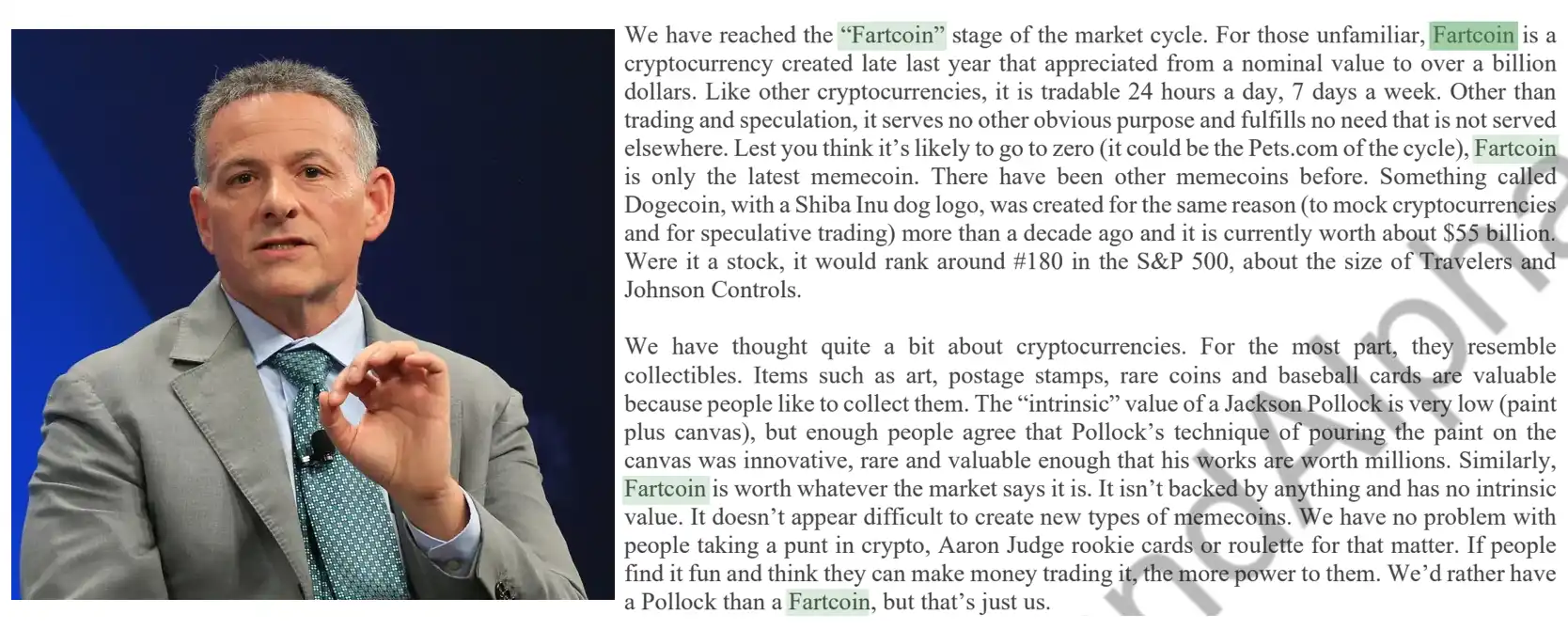
but it is precisely because he disagrees so strongly in his letter that it seems all the more interesting. Because when a financial veteran known for his "rationality" and "value" starts making a long comment on a meme coin, you know that this is no ordinary shitcoin.
Owen Lamont, a researcher at Acadian Asset Management, puts it more bluntly. In a report titled "The Fartcoin Stages of the Market," he wrote: "I disagree with the statement that 'Fartcoin is useless.' It's just for that: to provoke those of us who think we're doing serious work." Reading between the lines is full of irrational anxiety about the market. He called this phase "Crypto-flatulent economics" and pointed out that Fartcoin was not a failure, but hit the three new logics of the market – nihilism, attention economy, and outright stupidity.
In his eyes, the core of Fartcoin's success is not technology, but communication. It stimulates discussion, creates emotion, and forces everyone who takes the market seriously to respond to it. Even if you just scold it, you have already fallen into its trap. "Fartcoin is the product of AI's precise manipulation of human brain circuits, and if you think it looks like a financial experiment designed by malicious AI, it's because it is."
And if the above two still have some anger and restraint, billionaire Cliff Asness's attitude is much more relaxed. The co-founder of AQR Capital and a rational representative of traditional finance, who has always been known for his calmness and factor modelling, suddenly let go of the "rational person hypothesis" when faced with Fartcoin. He wrote on social media: "Ironically, Fartcoin is the only thing I don't suspect." In the context of that post at the time, it was a mild mockery of the absurdity of the entire market. 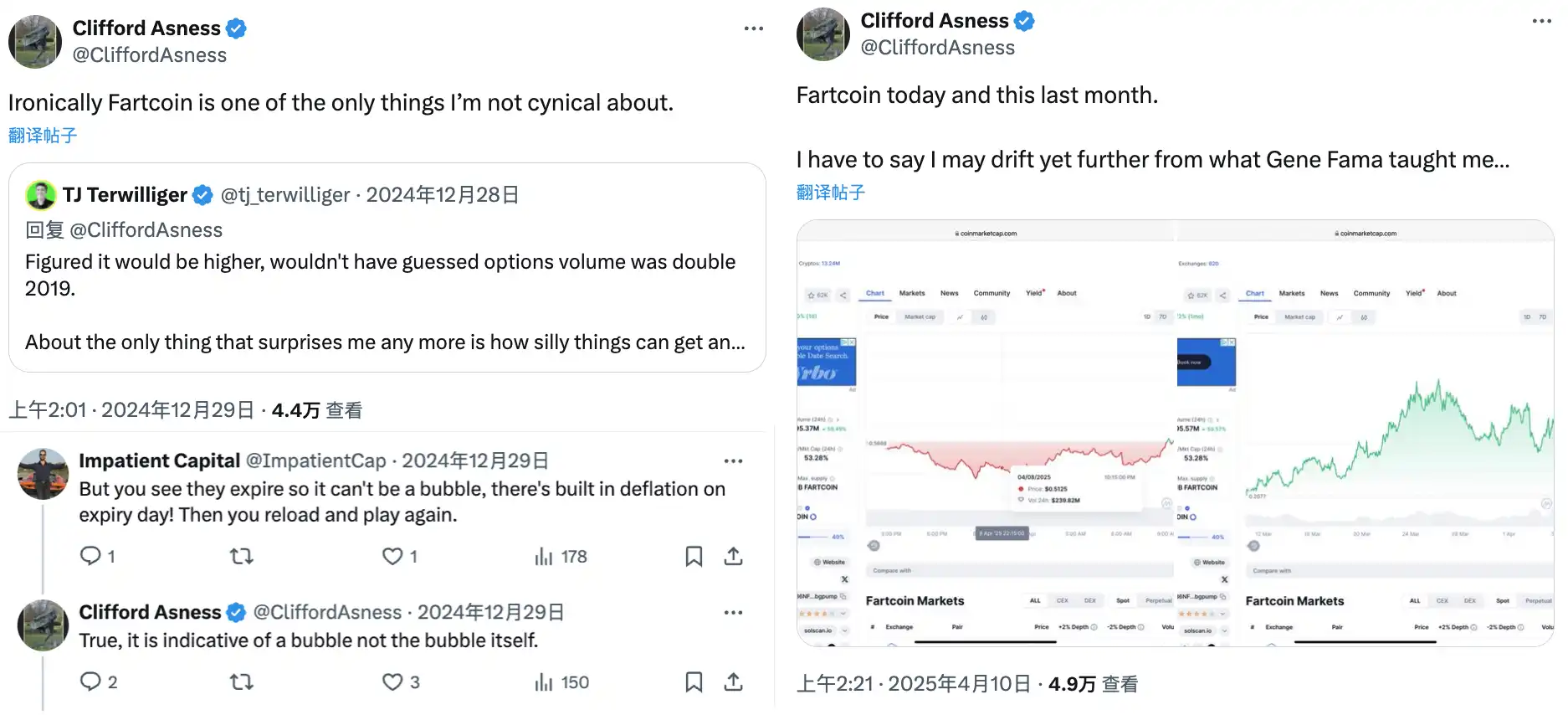
In this tease, Fartcoin doesn't pretend to be "fundamental" like other assets. It never claims to be some kind of innovative infrastructure, nor does it peddle any technological narrative, but rather sits there nakedly, admitting that it's just an "emotional product". On the same day that he said this, Fartcoin took off again, and the gains quickly increased.
What'seven more intriguing is that a few months later, Cliff Asness added, "Fartcoin's performance today and over the past month, I have to say, I might be moving further away from what Gene Fama taught me." (Gene Fama is the founder of the "efficient market hypothesis" and an academic mentor to Cliff Asness)
Fartcoin also owns MicroStrategy?
This coin called "Fart" not only stands firmly above the billion market capitalisation, but also has its own MicroStrategy, FartStrategy, just like Bitcoin.
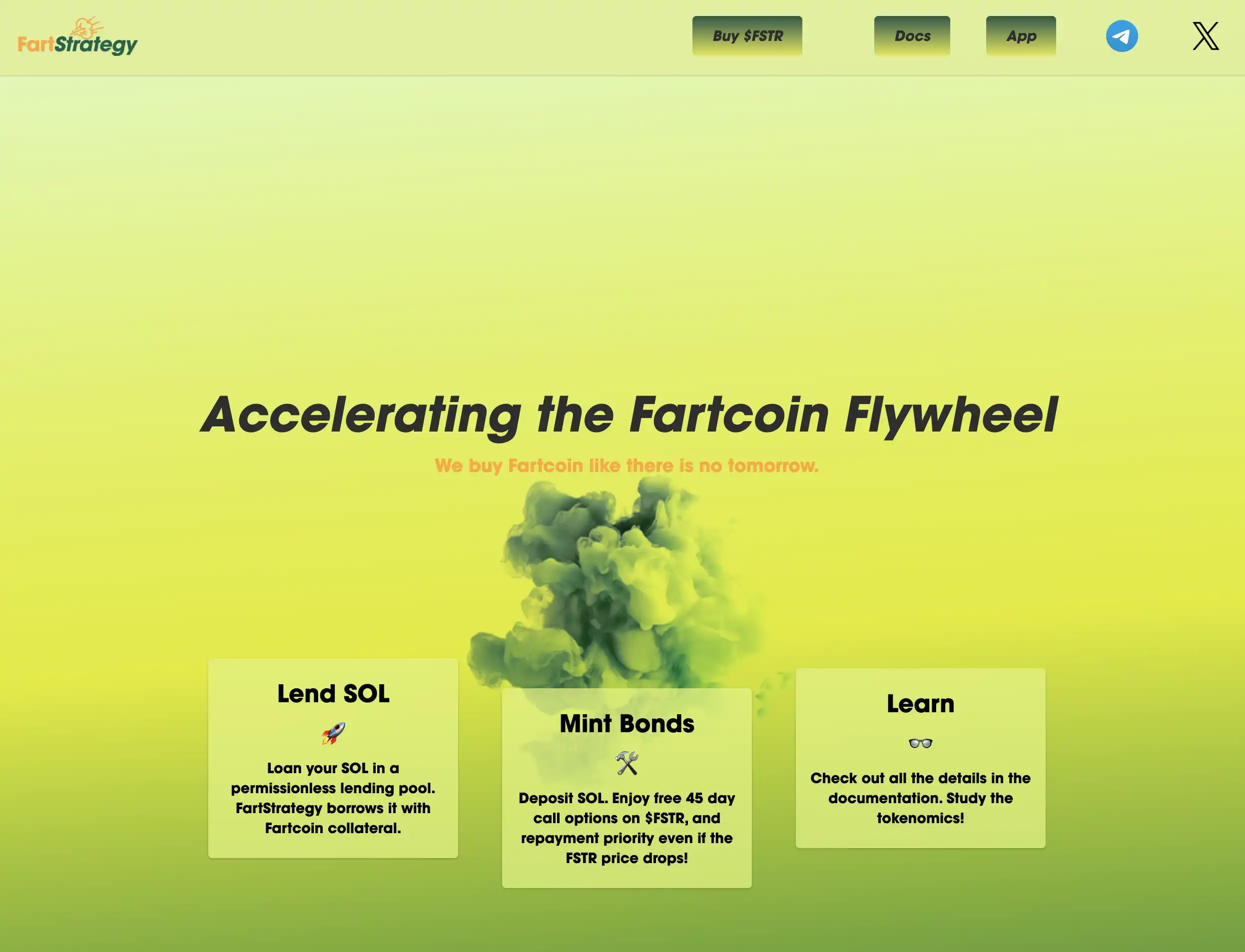
, when even the "meme" can replicate MicroStrategy's "buy coins, buy coins, and support the market value with positions", this absurd drama really fills in the last piece of the puzzle.
Bloomberg's financial columnist Matt Levine didn't miss the show. Matt Levine is a Bloomberg columnist, former Goldman Sachs investment banker, and one of Wall Street's most popular financial commentators. His column, Money Stuff, has been hailed as a "must-read every day" and is read by the entire elite circle of Wall Street, from SEC officials to hedge fund managers.
In his 2025 column, "Crypto Perpetual Motion Machines," he devotes a section to analysing FartStrategy, calling it "the pinnacle of financial nihilism." The article begins, "If you can sell the air in a bale, then why can't it be Fartcoin?"
The logic of FartStrategy's operation is very simple, even blatant: it is a DAO created specifically for the purchase of Fartcoin, and its mission statement is, "Hot air will rise, and we will ride this hot flow to create value for Fartcoin and $FSTR (FartStrategy's token) holders."
Doesn't it sound like "we don't produce content, we're just porters of memes"?
It has no profit model, no application landing, and no stability mechanism. It's just a transparent joke, cloaked in smart contracts, and in the name of community voting, packaging "We intend to continue buying Fartcoin" as a "financial strategy". Even the official copywriter bluntly stated: "FartStrategy is an example of comedic absurdity, and there should be no financial gain expected to hold it."
In the article, Matt Levine likens it to a mirror derivative of MicroStrategy, which buys bitcoin through constant funding, inflating the company's valuation; The former, on the other hand, relies on the linkage between meme and DAO to self-pressurise the hot air to form a "Fartcoin Flywheel", a financial perpetual motion machine that continues to be driven by emotions. He describes it as "a leveraged container with hot air as an asset", and when its market cap is higher than the total value of its actual Fartcoin holdings, it sells $FSTR and buys more Fartcoin, completing the meme pixel-level closed loop.
Fartcoin comes from the absurd and stands out in chaos.
According to Dune and BubbleMaps, from January 3 to May 9, 2025, Fartcoin's chip structure is gradually expanding from the early concentration of large investors to the decentralisation of retail investors.
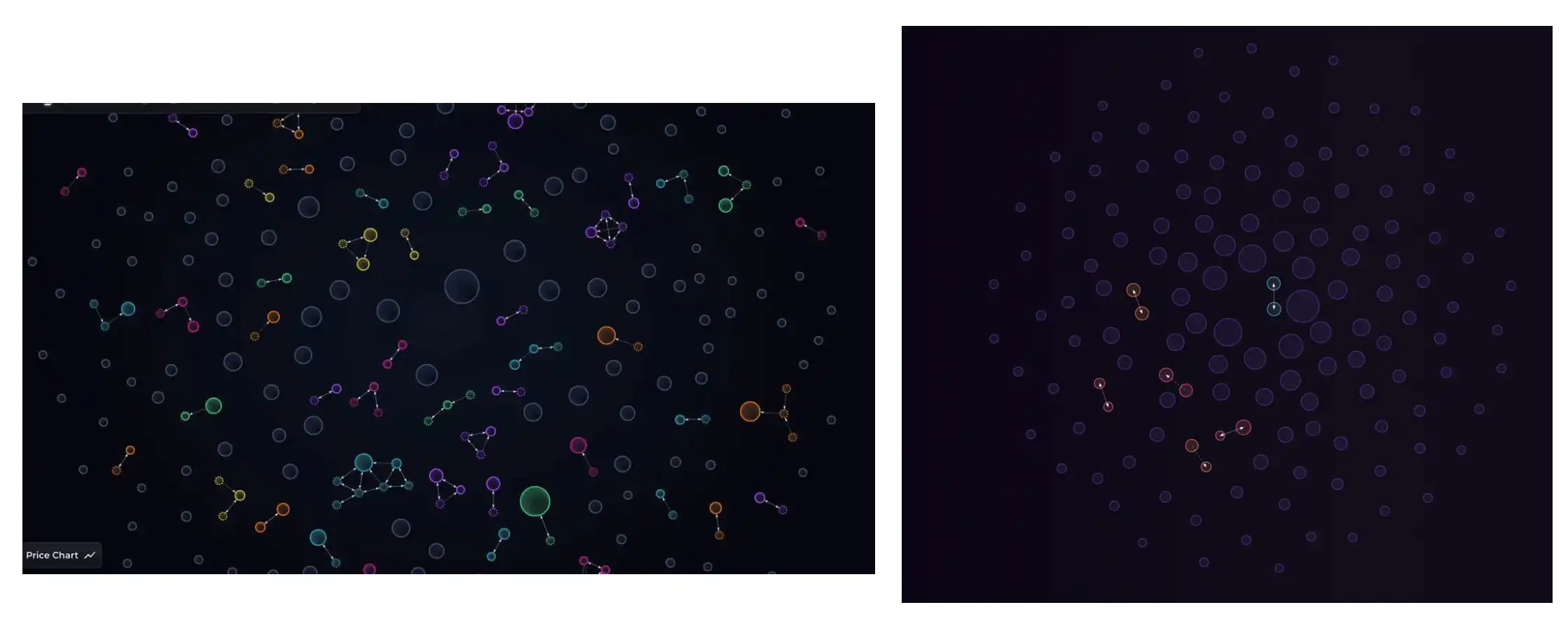
 Especially from January to May this year, the growth slope of the purple area (addresses holding less than $1000) began to rise. At the same time, Fartcoin has become one of the most traded and liquid coins in Binance's Alpha Zone.
Especially from January to May this year, the growth slope of the purple area (addresses holding less than $1000) began to rise. At the same time, Fartcoin has become one of the most traded and liquid coins in Binance's Alpha Zone.
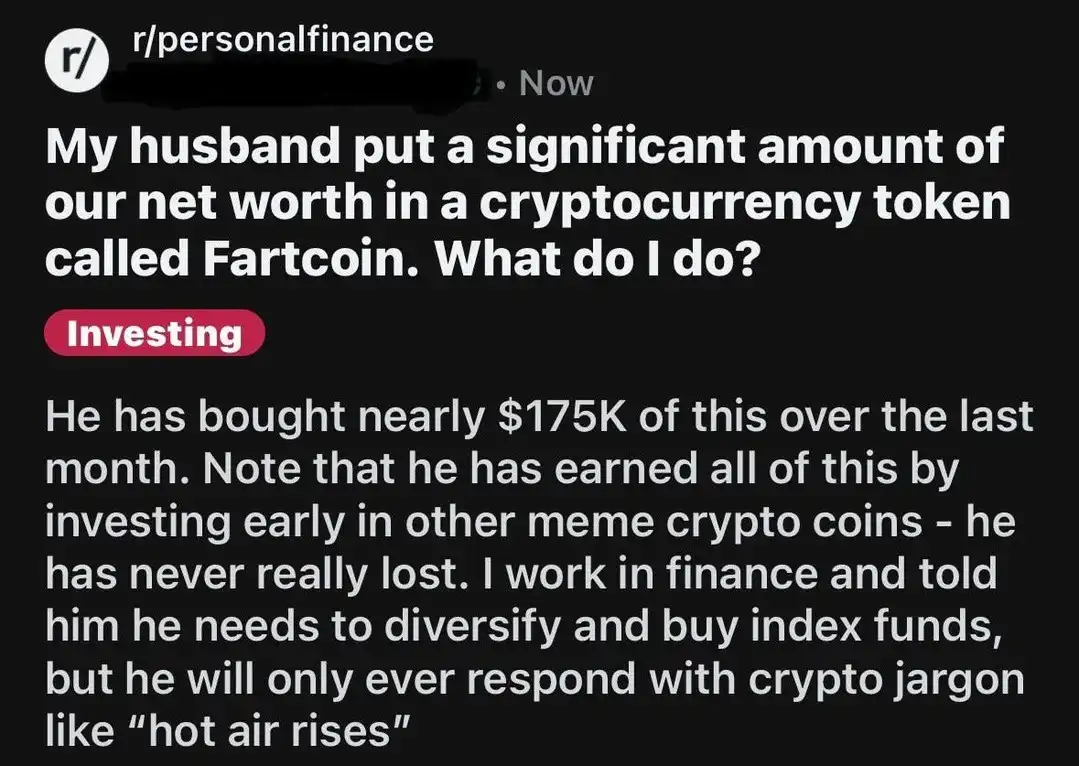
Fartcoin Meme: My husband put a large portion of his family fortune into a cryptocurrency token called Fartcoin, what should I do?
From the beginning of the institution to the current chip dispersion. All of the seemingly rational financial narratives eventually take shape in Fartcoin's toilet humour.
Fartcoin fits almost all of our stereotypes about meme coins: funny names, no practical value, all verbal and socially driven, and even defensively defensible to traditional Wall Street investors.
Link to
original article
